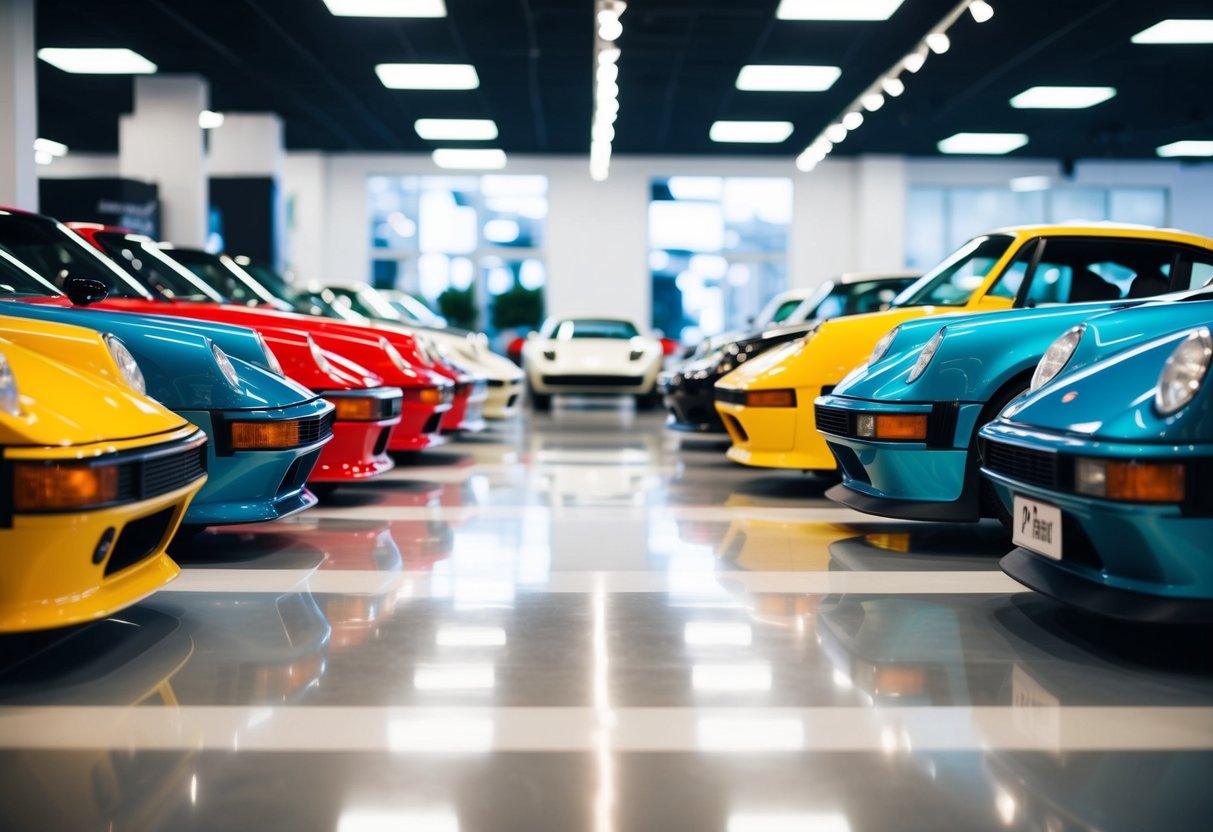
The Track Icons: Porsche, Ferrari, and More
In the realm of track racing, the 1980s saw a competitive showdown between some of the most iconic automotive brands. The Porsche 944 emerged as a significant player. Known for its balance and precision, the 944 was admired for its performance and style, capturing the imagination of car enthusiasts worldwide.
Meanwhile, Ferrari continued its legacy with models such as the Ferrari F40, which became synonymous with speed and luxury. Its sleek design and V8 engine made it a symbol of automotive prowess during the decade.
Brands like Lamborghini and BMW contributed iconic models, adding to the rich tapestry of innovations and design excellence. Collectively, these vehicles reflected the spirit of an era driven by competition and technological advancement.
In Pursuit of Speed: Milestones in Performance
The 1980s marked a dynamic evolution in sports car performance, with advances pushing the boundaries of speed and power. Iconic models like the Ferrari Testarossa and Ruf CTR Yellowbird were standout names, showcasing remarkable top speeds and horsepower that defined an era.
Breaking Barriers in Speed and Agility
During the 1980s, sports cars saw significant improvements in speed and nimbleness, often conceived with racing technology integrated into road-legal vehicles. The Ferrari Testarossa, for instance, became renowned for its top speed of around 180 mph. Its design skillfully combined aerodynamic efficiency with a powerful 12-cylinder engine, making it a favorite among enthusiasts.
The Ruf CTR Yellowbird was another exemplar of remarkable engineering. It could accelerate to 211 mph, a milestone that marked it as one of the fastest cars of its time. Porsche’s base design, coupled with Ruf’s enhancements, resulted in a highly agile machine. This focus on speed and maneuverability set a new benchmark in car performance.
Horsepower Wars: The Numbers Game
The race to achieve superior horsepower became emblematic of 1980s sports car culture. Manufacturers intensively focused on besting each other’s horsepower ratings, a pursuit driven not only by performance but also by the consumer market’s growing interest in powerful engines. The Testarossa featured a 390 horsepower rating, which was impressive for its time and contributed to its prestigious reputation.
On the flip side, Ruf’s CTR Yellowbird packed a punch with a twin-turbo setup that boosted its output dramatically. Delivering approximately 469 horsepower, it dwarfed many other contemporary models. The decade’s horsepower wars propelled technological advancements, emphasizing power as a crucial component of a sports car’s appeal and cementing the era as a golden age for automotive performance innovation.
Evolution of Driving Experience in the ’80s
The ’80s marked a significant transformation in sports car design, shifting from sheer power to a more balanced fusion of speed, agility, and technology. Innovations such as all-wheel drive played a crucial role in shaping the modern driving experience.
From Raw Power to Refined Sportiness
The 1980s saw a shift from the raw, unbridled power of earlier cars to models that offered a more refined sportiness. Manufacturers began to prioritize handling and control alongside power, leading to vehicles that were not only fast but also more enjoyable to drive. The Ferrari 288 GTO exemplified this evolution, combining turbocharged performance with advanced aerodynamics, setting new standards for handling and driver engagement.
Meanwhile, European carmakers focused on producing cars that balanced engine power with precise steering and suspension setups. This balance allowed drivers to experience the thrill of speed without sacrificing control. As a result, sports cars from this era offered a more inclusive driving experience, appealing not just to speed enthusiasts but also to those seeking a more connected interaction with the road.
The Impact of All-Wheel Drive Systems
The introduction of all-wheel drive systems in the ’80s significantly altered the landscape of sports car performance. The Audi Quattro became a pioneer in this field, proving the benefits of all-wheel drive in terms of traction and stability. Such systems allowed sports cars to maintain control in a variety of driving conditions, enhancing confidence and safety for the driver.
By distributing power to all four wheels, all-wheel drive models could deliver superior grip, especially in adverse weather. This technology was not only a game changer in motorsport but also influenced consumer perceptions of performance vehicles. The increased control and capability of these vehicles redefined what drivers expected from a sports car, setting a new benchmark for the industry.



